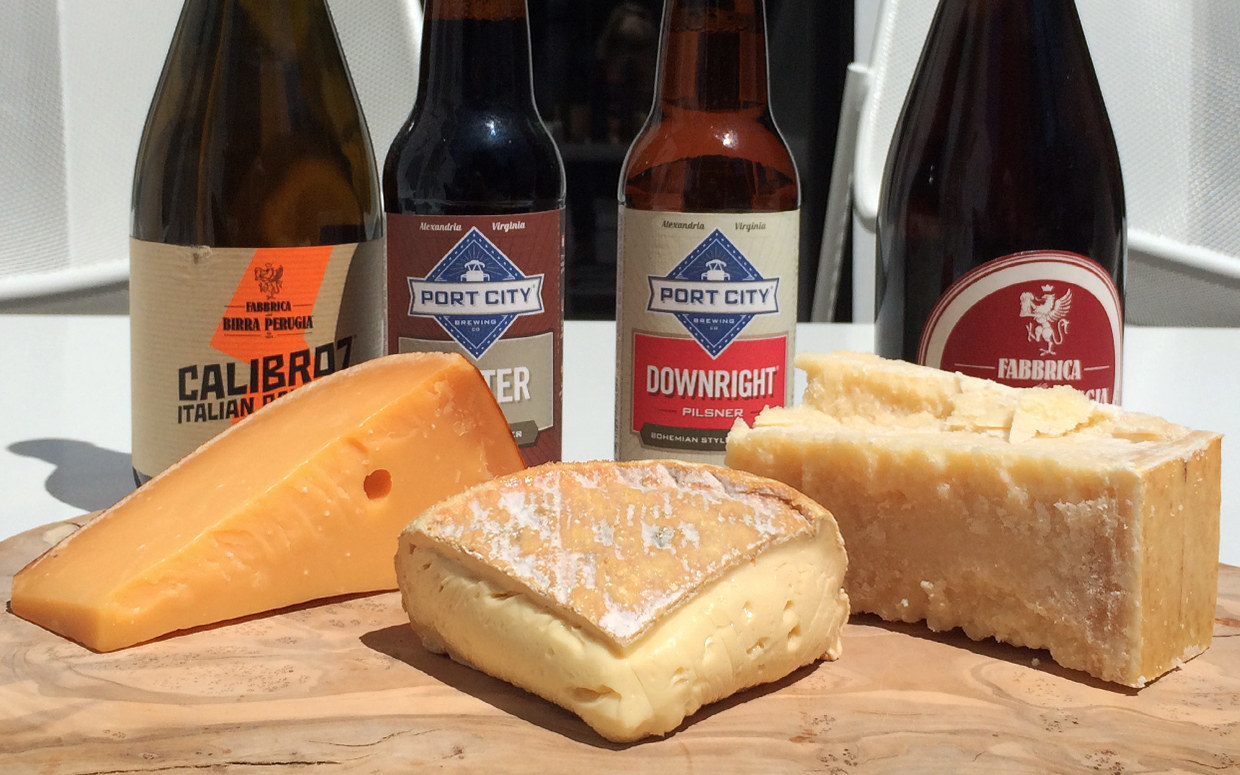When most people think of pairing cheese with a beverage, they jump straight to wine. Don’t get me wrong, I love a good bottle with a beautiful wedge of cheese_it’s a classic combination for a reason! However, in the world of delicious pairings, there’s a whole other category that begs to be explored–beer. And with the current upswing in specialized craft brews, there’s all the more reason to branch out into this relatively unconventional pairing.
As it turns out, many people argue that beer and cheese make for the most natural pairing that you can find. Essentially, they’re fermented versions of the same thing–grass. As most people know, beer is made from wheat and barley, both of which are grasses. In fact, in addition to eating regular grass, cows are oftentimes fed grains left over from beer making to supplement their diet. While grass breaks down into lactose in cows’ stomachs, the grains are similarly broken down into maltose during the mash stage of making beer. Both lactose and maltose are sugars that are then fermented with yeast and turned into their final products.
The results of all of this fermentation may look vastly different, but they have very similar flavor profiles. You can find both cheeses and beers that are nutty and toasty, floral and fresh, or bitter and earthy. Needless to say, when paired correctly, they’re just delicious together.
So what does “paired correctly” mean? Well, as with all pairings, my firm belief is that whatever tastes best to you is what matters the most. When it comes to your preferences, there’s no such thing as “incorrect”–everyone’s tastebuds are different and tasting is a subjective art. That being said, there are a few guidelines that may help to steer you towards a more pleasing pairing.
First, let’s talk about balance. I find it’s best to pair cheeses with beers that have a similar amount of intensity in terms of flavor and texture. For example, a dark, heavy porter will completely overpower a light, fresh chevre. Similarly, a stink-tastic Taleggio or Epoisses will dominate a light, citrusy hefeweizen. You want each component to complement the other, not stomp it out completely or, arguably worse, bring out its lesser qualities.
Secondly, let’s discuss flavor. Pairing items with similar flavor notes tends to accentuate that particular component in a harmonious way. Think of that citrusy hefeweizen with the tangy, lemony chevre–the overall effect will be light, tart, and refreshing. That being said, if you’re feeling bold, you can also play the opposites attract card. Balancing salty and sweet is a popular way of doing this. Dark, chocolatey beers go well with salty blues–salty and sweet all in one bite!
Want more tips? On Wednesday, April 20th, our butcher and beer aficionado, Scott Weiss, and I will be hosting a beer and cheese pairing event at 7pm. We’ll be tasting and discussing four different cheese and beer pairings, featuring some of our imported Italian beers along as well as a few local brews. Come join us and explore the world of cheese and beer!



About The Author
Related Posts
As we leave behind northern Italy for the center, the vast, melancholy plains of the…
A certain sadness greets us on Saturday morning, in part because we are saying goodbye…